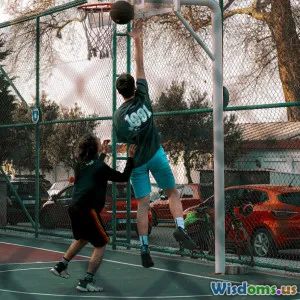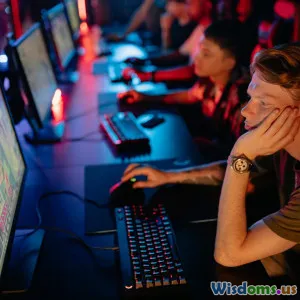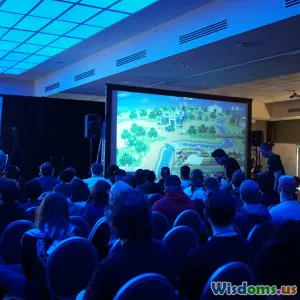Tracking the Rise of Virtual Fashion in Gaming
10 min read Explore how virtual fashion is transforming gaming culture and digital economies worldwide. (0 Reviews)Tracking the Rise of Virtual Fashion in Gaming
In recent years, an extraordinary transformation has occurred at the intersection of gaming and fashion, giving birth to an entirely new digital phenomenon: virtual fashion. Once a niche curiosity, virtual fashion now fuels multi-million-dollar economies and redefines identity within digital worlds. But what exactly is driving this meteoric rise? How is virtual fashion reshaping both the gaming industry and broader culture? This article takes you on a detailed journey through the cradle and crescendo of virtual fashion, painting a vivid picture of its origins, growth, business models, and cultural implications.
The Genesis of Virtual Fashion: More Than Pixels
Virtual fashion began as a feature confined to gaming avatars—simple wardrobe choices in games like The Sims or World of Warcraft. Initially, these outfits were utilitarian, designed to help players identify teams or roles. However, a confluence of technological advances and cultural shifts gradually changed the nature and importance of these digital garments.
Technological Enablers
The advent of high-fidelity 3D modeling, improved rendering technologies, and real-time physics simulations enabled developers and designers to create detailed, realistic garments within virtual worlds. Platforms such as Roblox and Fortnite transformed entire economies around customizable avatars, boasting expansive wardrobes with unique, often limited-edition outfits.
Simultaneously, blockchain and NFT (Non-Fungible Token) technologies introduced a groundbreaking way to establish authenticity, scarcity, and ownership of virtual fashion. For example, The Fabricant, a digital fashion house, sells garments purely in digital form tied to blockchain certificates, guaranteeing exclusivity in an otherwise infinitely replicable ecosystem.
Cultural Drivers
The rise in gamer populations amid expanding internet penetration, alongside the global shift to digital social interactions (especially post-COVID-19), fostered a desire for enhanced self-expression and status within virtual environments. Gamers no longer sought just skill mastery; they craved distinctive digital identities, using fashion as a form of symbolic communication akin to real-life wardrobe choices.
Virtual Fashion’s Expanding Influence Across Games
Fortnite: A Virtual Fashion Phenomenon
Epic Games’ Fortnite stands as one of the most impactful platforms in popularizing virtual fashion. With a reported 12 million concurrent daily active users and over 350 million registered players, Fortnite has generated over $9 billion in revenue (as of mid-2023), a significant share of which stems from in-game purchases of skins and outfits.
These skins serve dual functions—cosmetic self-expression and social currency within the Fortnite community. Epic Games frequently collaborates with well-known fashion brands such as Balenciaga, Louis Vuitton, and Travis Scott to release limited-edition skins, blurring boundaries between gaming and haute couture.
Roblox and User-Generated Content
Roblox, with more than 230 million monthly active users as of 2023, empowers its community to design and sell virtual fashion items on internal marketplaces. This democratization has spawned careers for designers who construct unique virtual apparel, often monetizing their creativity through DevEx (Developer Exchange). Several creators have earned six-figure incomes purely by selling custom avatars’ outfits.
Roblox’s marketplace ecosystem is substantial; players reportedly spend over $1 billion yearly on avatar accessories, highlighting a vibrant economy fueled by diversity, creativity, and community involvement.
The Sandbox and Virtual Fashion in the Metaverse
The Sandbox represents an emergent paradigm—an open-world metaverse where users own plots, build virtual assets, and wear digital fashion linked to NFTs. Major luxury brands are entering this landscape, using the platform to showcase and retail exclusive virtual collections, signaling the growing fusion of gaming, fashion, and metaverse economies.
Business Models Fueling Virtual Fashion’s Rise
The financial driver behind virtual fashion is complex yet innovative:
-
Microtransactions: Almost all major multiplayer games monetize through the sale of skins, costumes, and accessories. Individual items typically range from $1 to $20, generating immense cumulative revenue.
-
Limited Editions and Collaborations: Special drops, often time-limited or quantity-restricted, create scarcity and hype comparable to physical fashion launches. Collaborative projects with renowned fashion houses and celebrities amplify demand.
-
NFTs and Ownership: By tying digital garments to NFTs via blockchain, buyers can ensure ownership, trade authenticity, and even resell the items on secondary marketplaces, adding investment and collectible value.
-
User-Generated Commerce: Platforms like Roblox allow creators direct sales to communities, fostering entrepreneurial opportunities.
This multifaceted monetization ecosystem underscores virtual fashion’s legitimacy as a lucrative sector, increasingly drawing mainstream fashion brands toward gaming partnerships.
Cultural and Social Impacts
Redefining Identity and Expression
Virtual fashion enables users to experiment with identities unrestricted by physical-world limitations such as budget, geography, or physical appearance. Users can wear avant-garde digital pieces that would be impossible or impractical in real life. This freedom expands creative expression and community belonging.
Digital influencers and streamers leverage virtual fashion to cultivate unique personal brands and connections with audiences. Emilee Caldwell, a prominent avatar stylist, explained in a recent interview: “In virtual worlds, fashion isn’t just about looks; it’s a language—one that tells stories, signals communities, and shapes social hierarchies.”
Environmental Considerations
As the fashion industry faces scrutiny for environmental impact, virtual fashion offers a comparatively sustainable alternative. A digital outfit requires no physical material production, yet conveys similar social value. This appeals to environmentally conscious consumers embracing digital-first lifestyles.
Challenges and Criticism
Despite enthusiasm, challenges remain. The environmental footprint of blockchain technology for NFTs, including energy consumption, provokes criticism. Additionally, questions about intellectual property and digital rights persist, complicating virtual fashion’s legal landscape.
Looking Forward: The Future of Virtual Fashion in Gaming
Integration with Augmented Reality (AR) and Virtual Reality (VR)
The fusion of AR/VR with gaming anticipates seamless virtual wardrobe try-ons and hybrid real-virtual fashion experiences. Brands like Gucci and Nike are pioneering AR filters and wearables for social media and gaming environments.
Deeper Brand Collaborations and Exclusive Drops
Expect more fashion houses to incorporate virtual collections as equally prestigious and targeted as their physical runways — creating new marketing and engagement channels.
Metaverse as the New Shopping Mall
Metaverse platforms are evolving into digital shopping hubs where users showcase, purchase, and socialize around virtual fashion items. Architects of these worlds aim to provide immersive retail experiences from digital boutiques to virtual fashion shows.
Democratization and Diversity
Virtual fashion’s low barriers for creation foster inclusion and innovation from global, diverse voices. This democratization contrasts sharply with historically exclusive traditional fashion.
Conclusion
The rise of virtual fashion in gaming illustrates a profound shift in how people create, consume, and express style in digital societies. What began as simple avatar customization now drives multi-billion dollar economies, fuels global digital culture, and challenges conventions of ownership and identity. Whether through iconic Fortnite skins, entrepreneurial ventures on Roblox, or high-fashion collaborations within metaverse spaces, virtual fashion is both a mirror and catalyst of wider cultural evolution.
As technology continues to advance and digital experiences deepen, virtual fashion is poised to become an even more integral facet of both gaming and everyday life—melding art, commerce, identity, and sustainability into one vibrant digital tapestry. Understanding this rise is imperative for anyone interested in the future of fashion, technology, and social interaction.
References
- Epic Games financial reports 2023
- Roblox Developer Exchange statistics, 2023
- Fabricant digital fashion collections
- Interview with Emilee Caldwell, Avatar Stylist, Digital Trends Podcast 2024
- Metaverse market analyses, Juniper Research 2023
- Environmental assessments on blockchain technology, Cambridge University 2023
This article was crafted to provide comprehensive insights into virtual fashion’s growth within gaming, supported by real data, examples, and expert commentary to inform and inspire readers about this dynamic digital frontier.
Rate the Post
User Reviews
Popular Posts



















